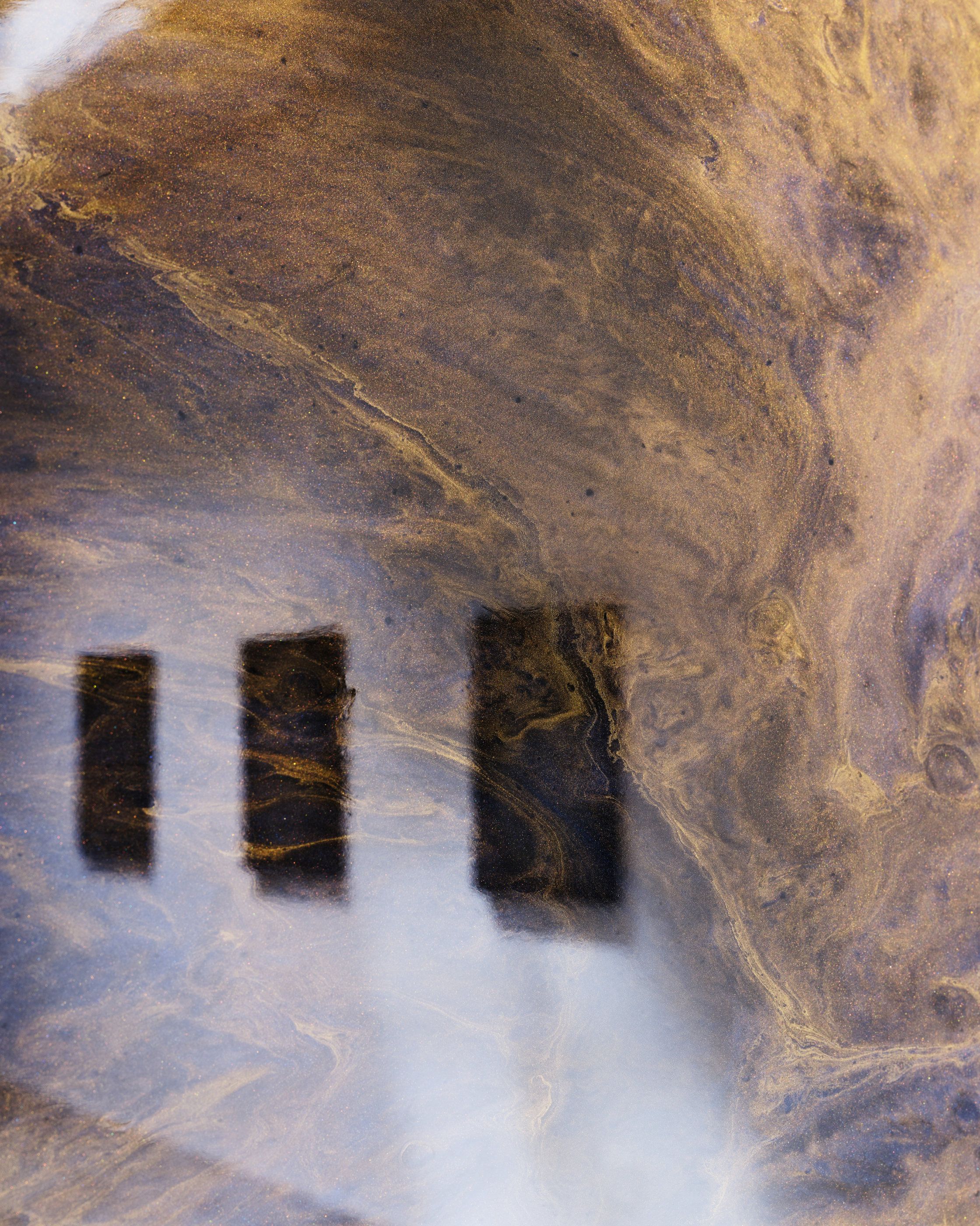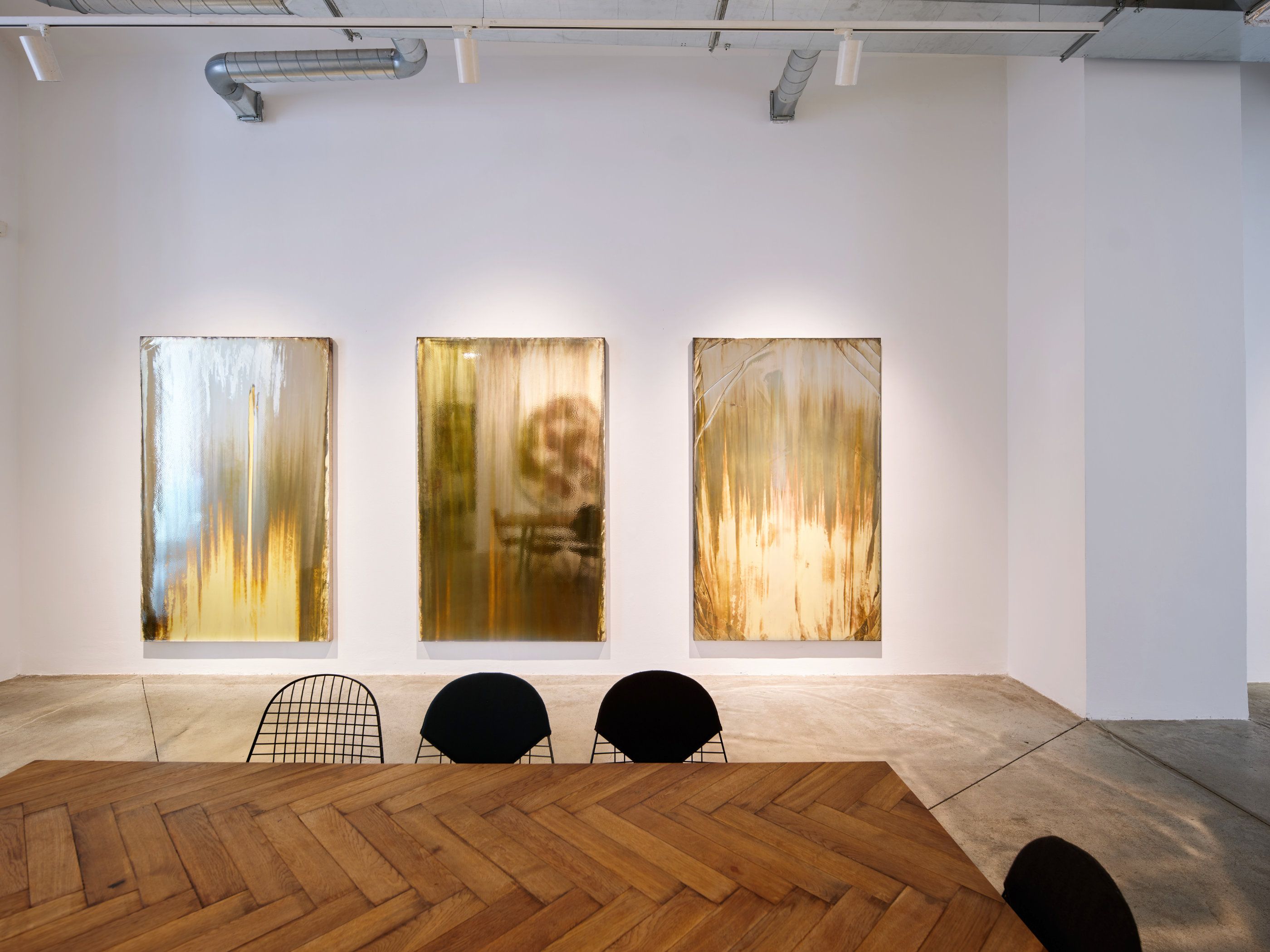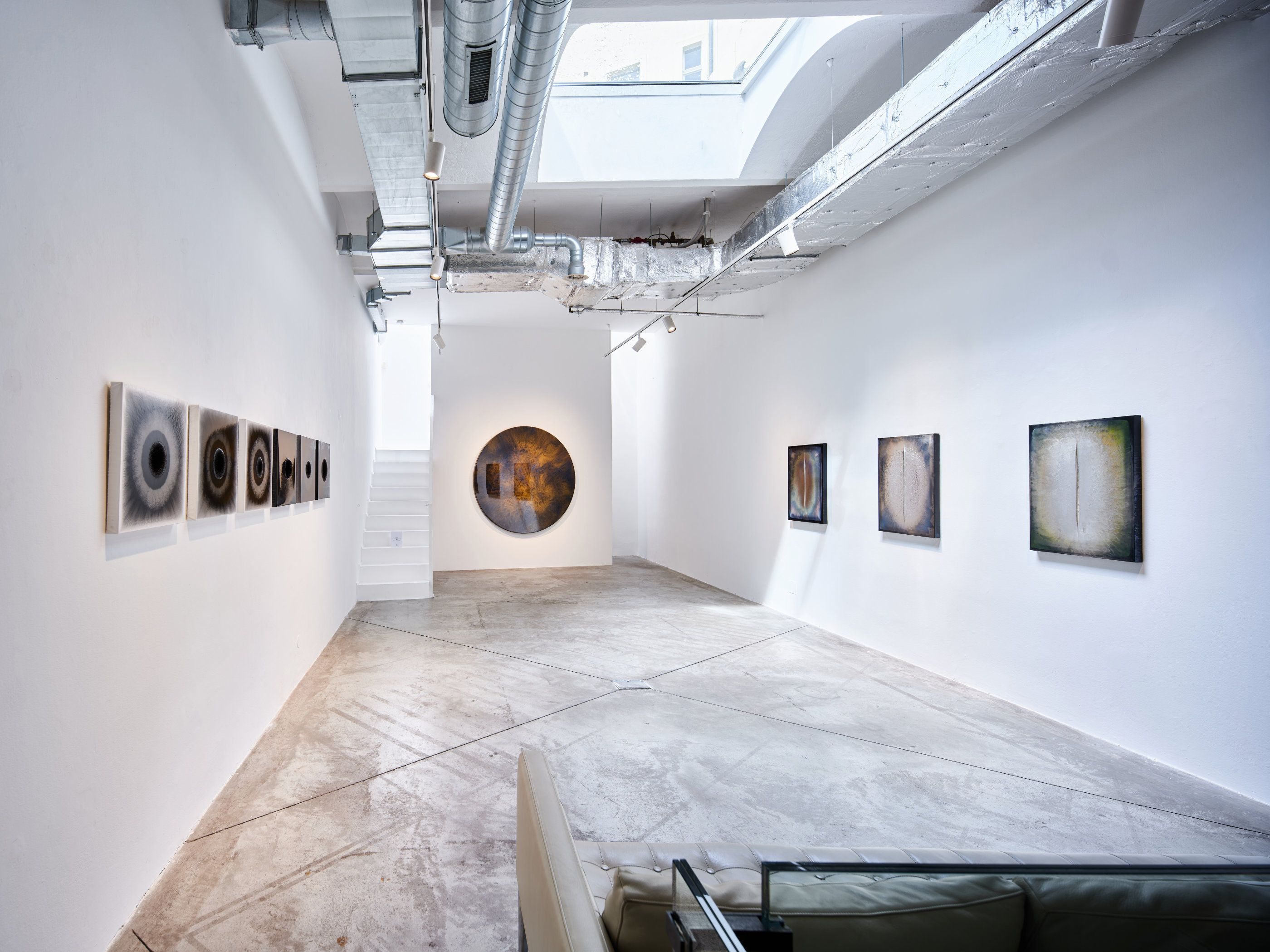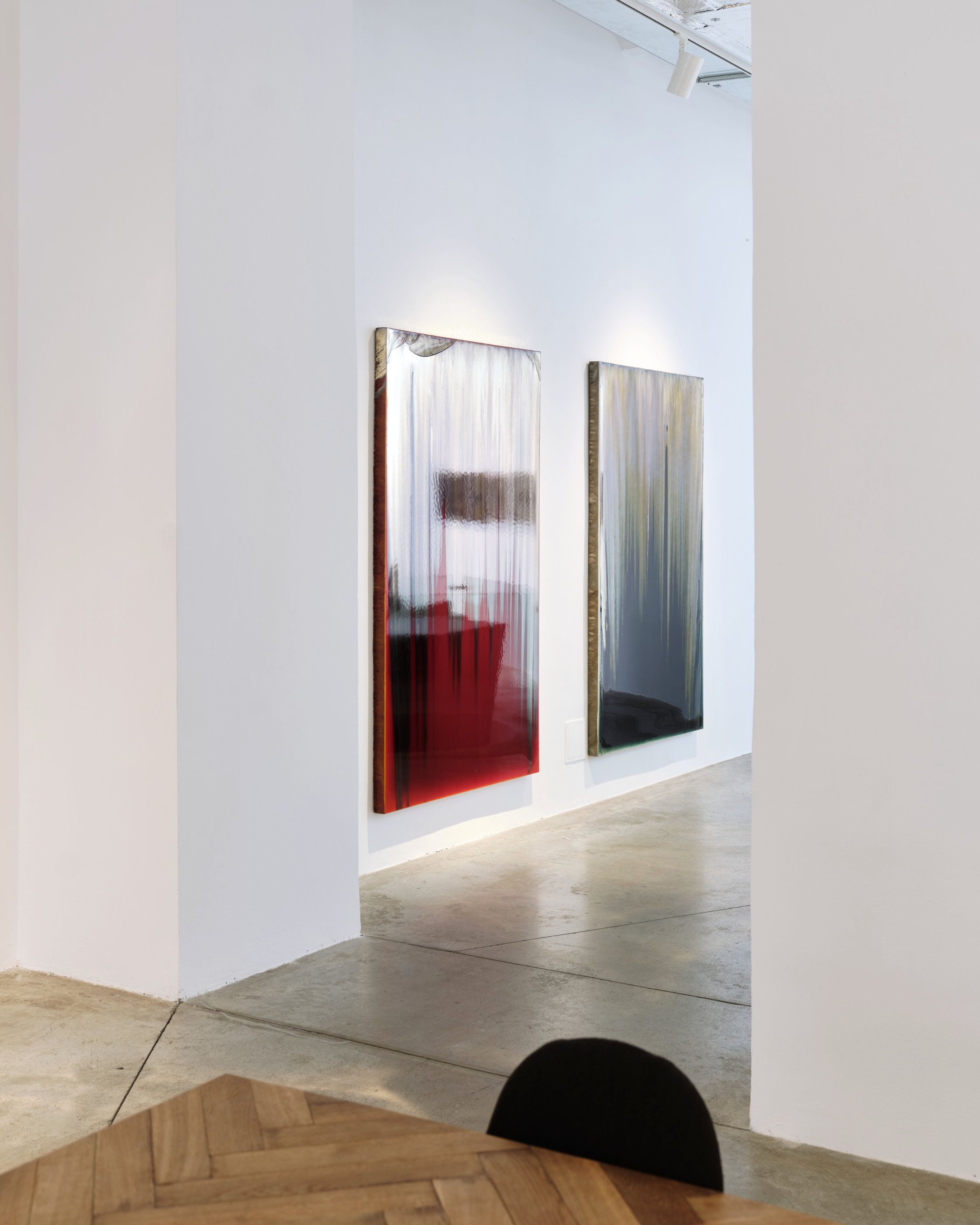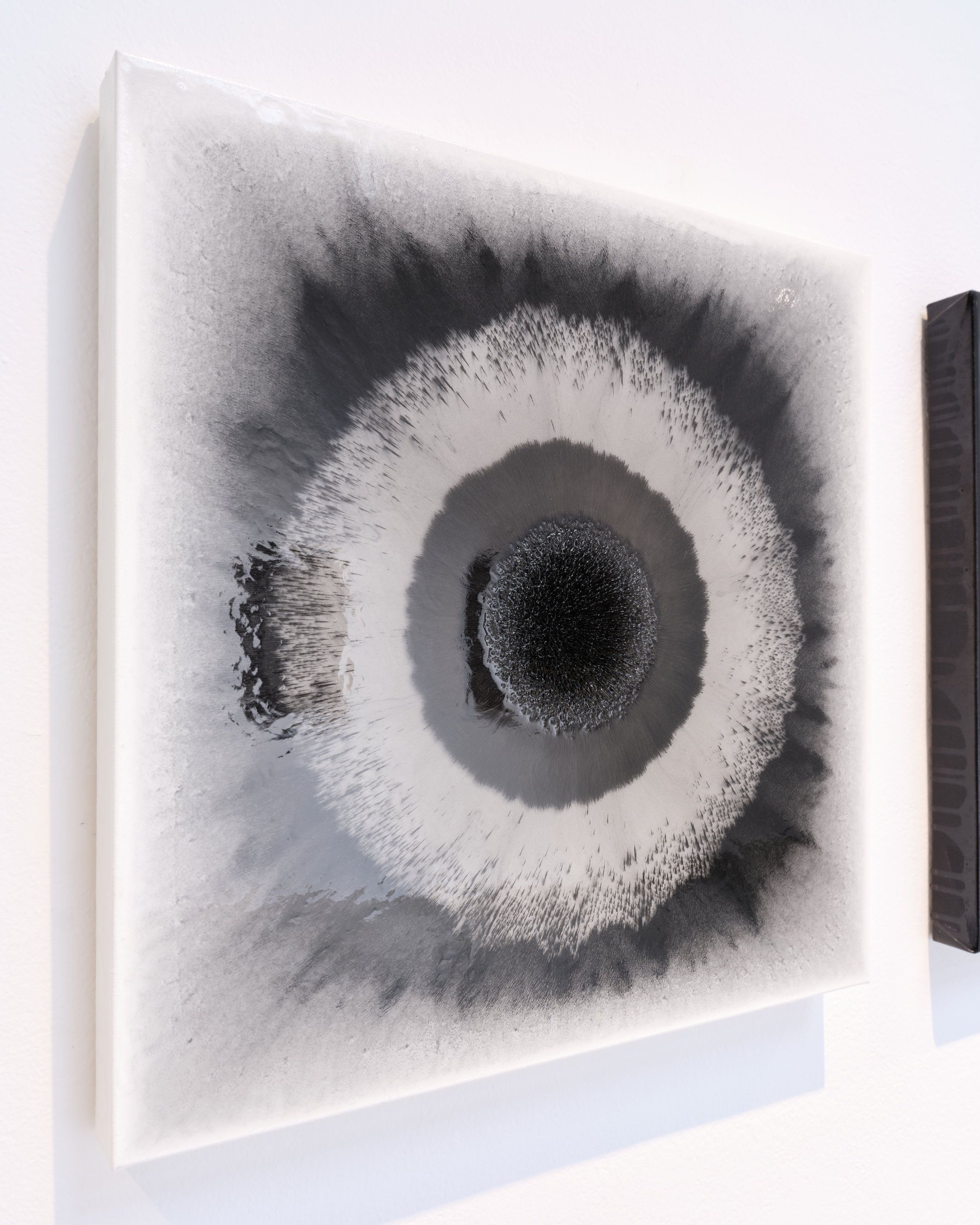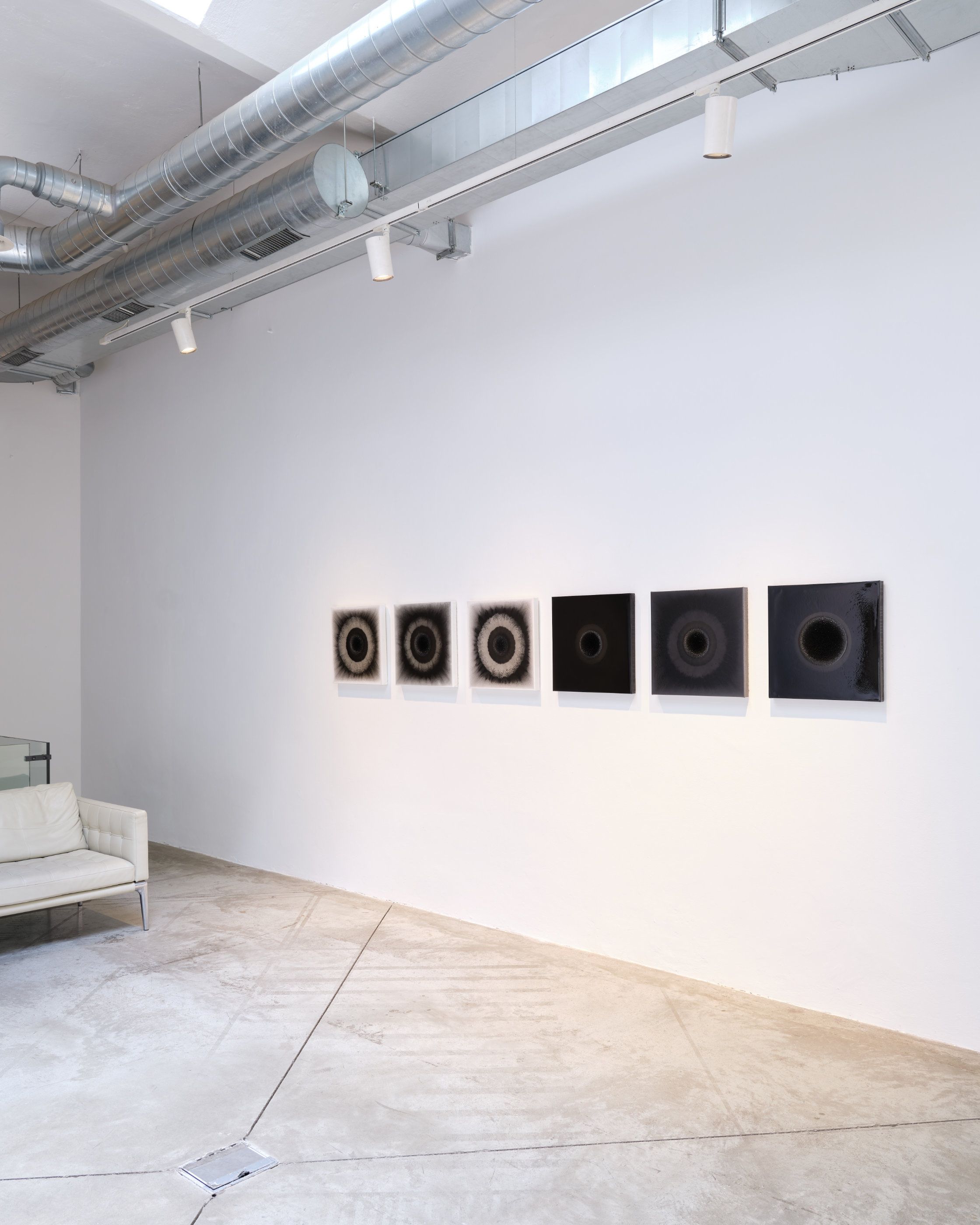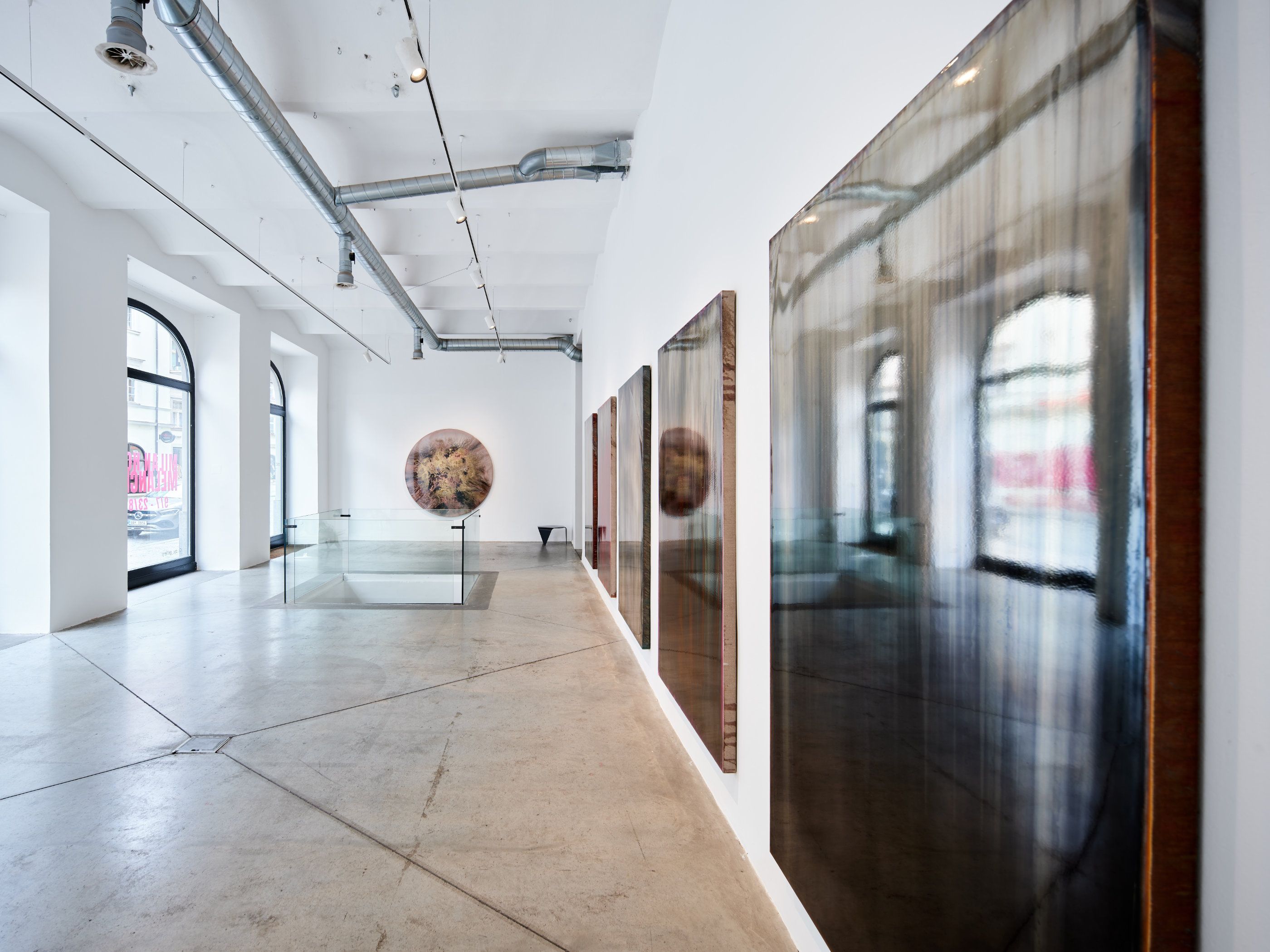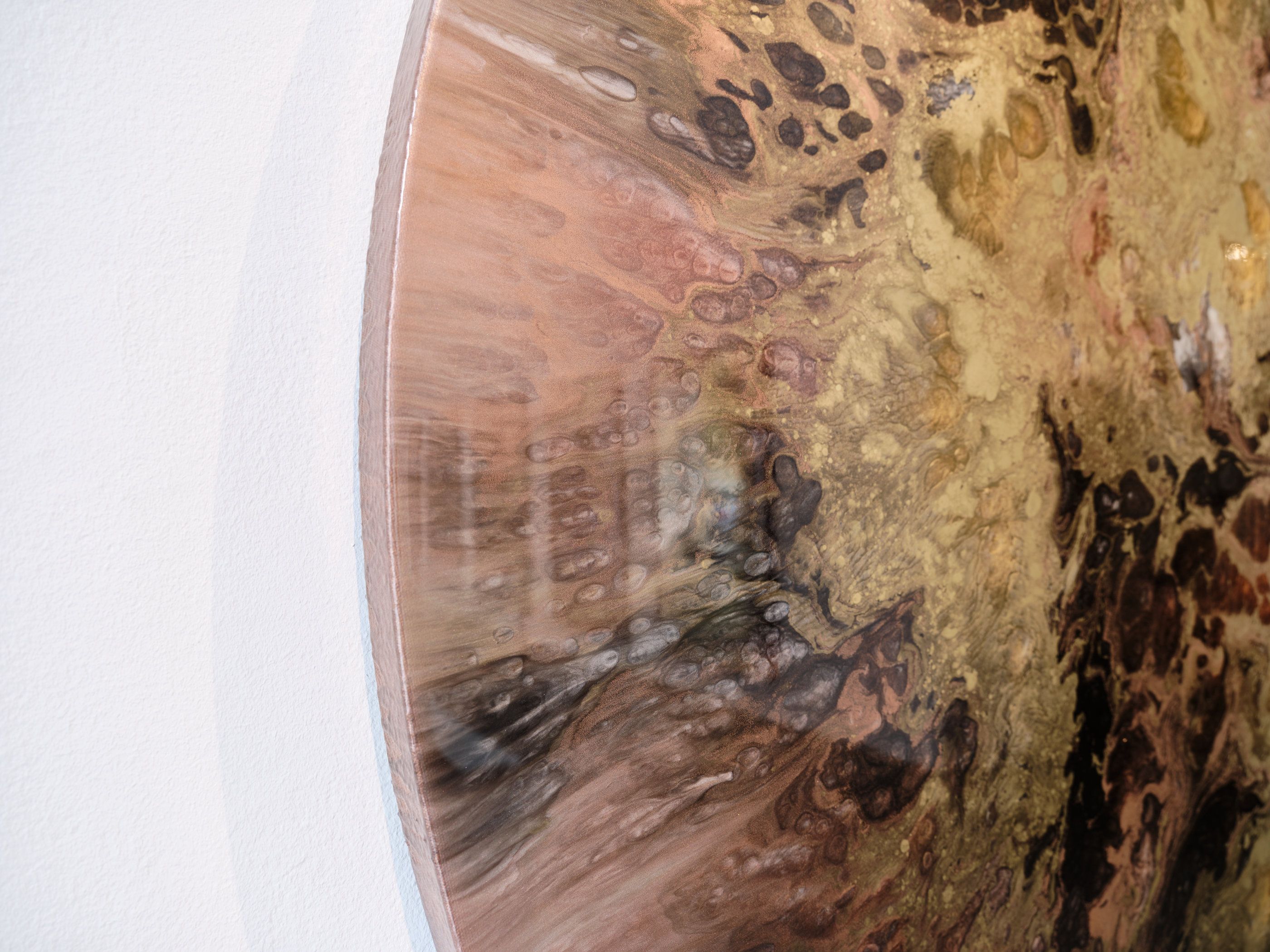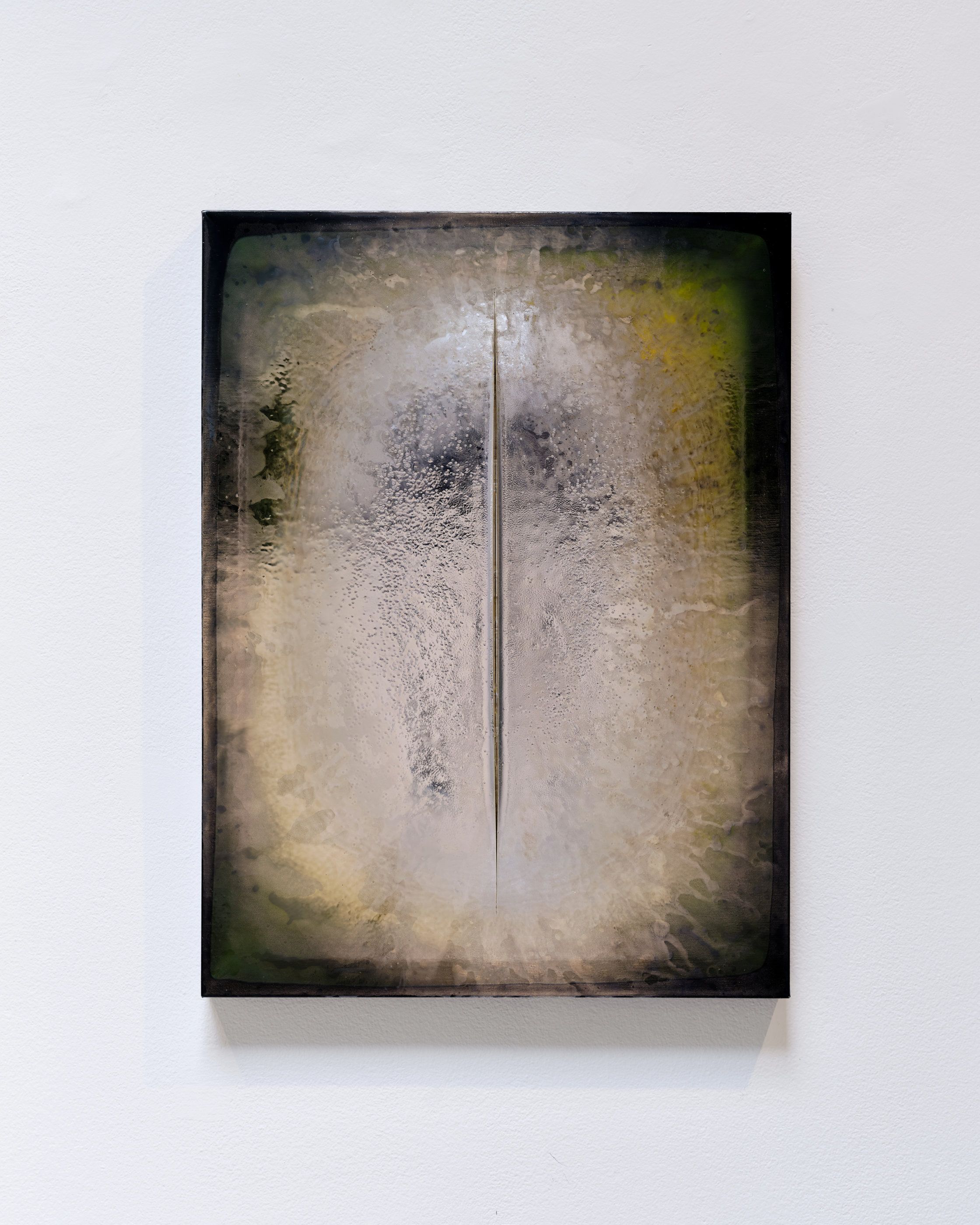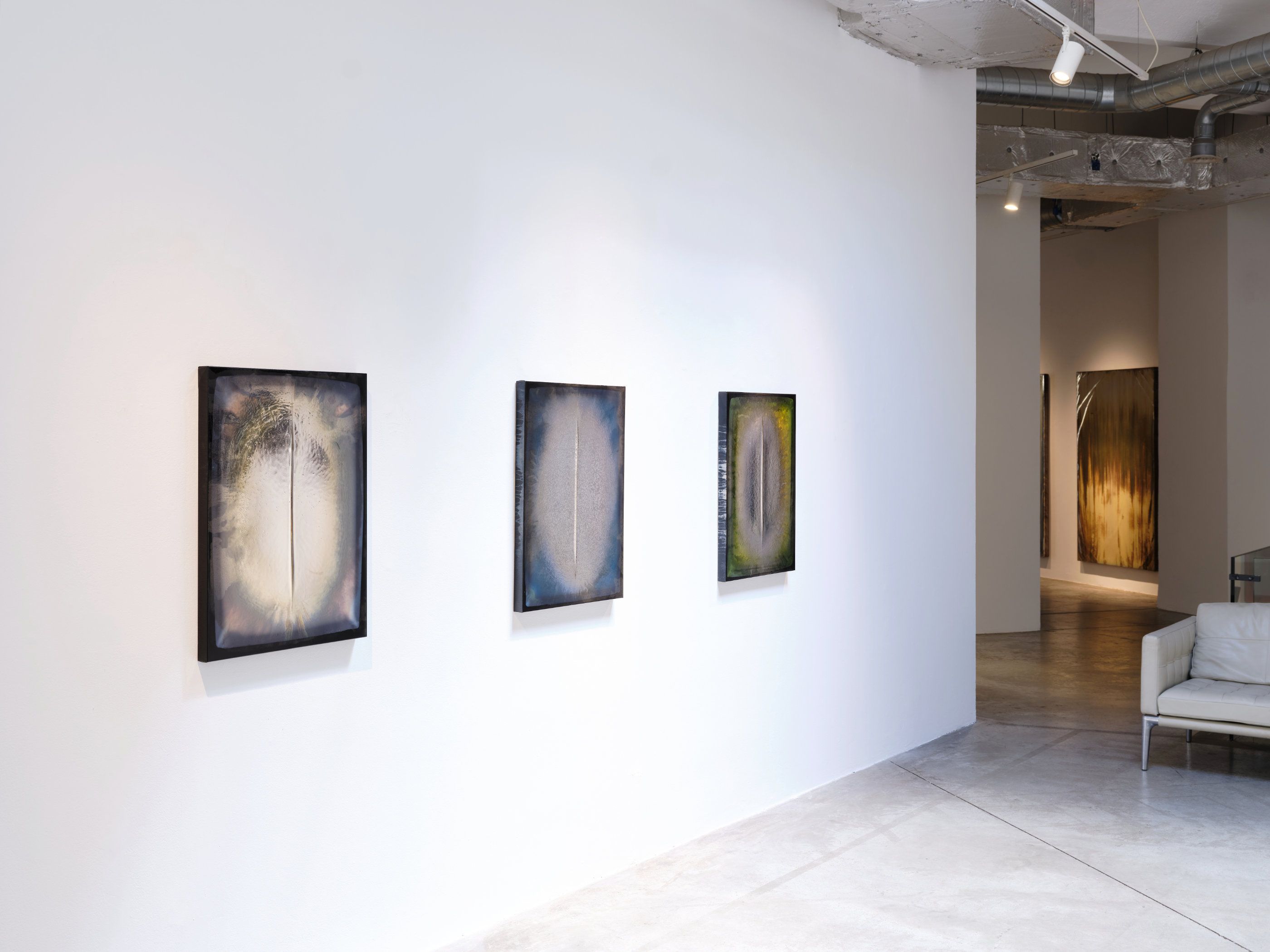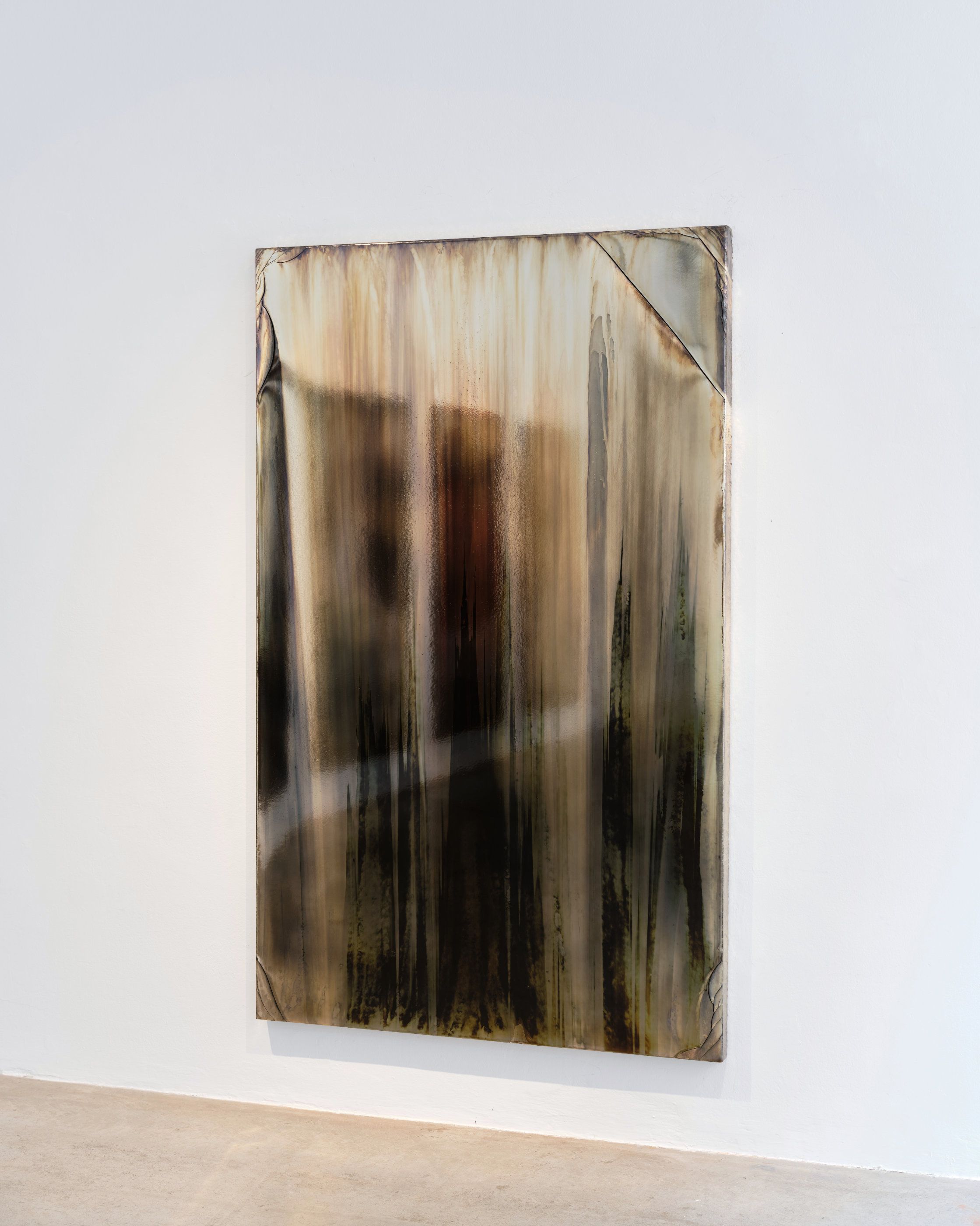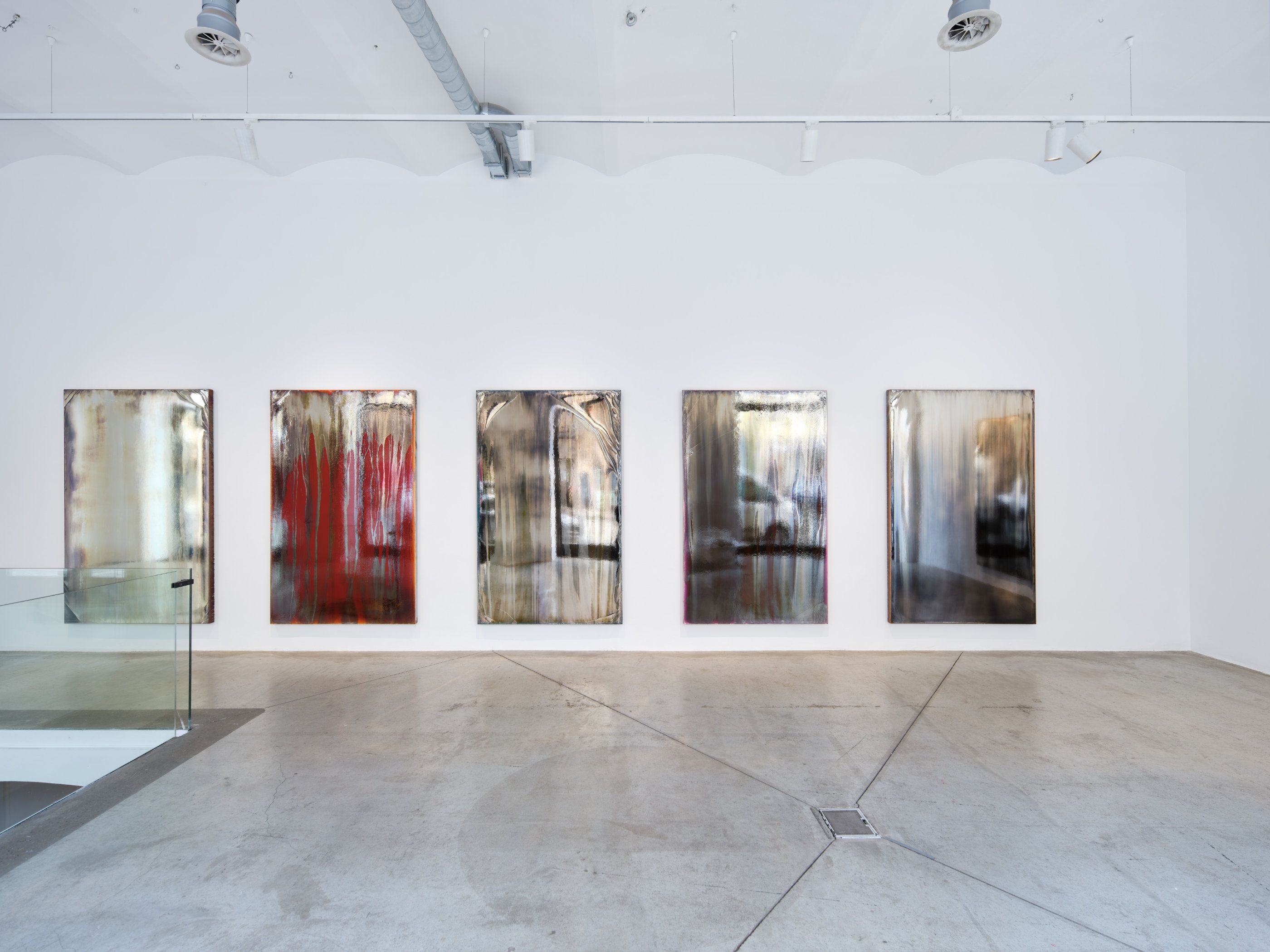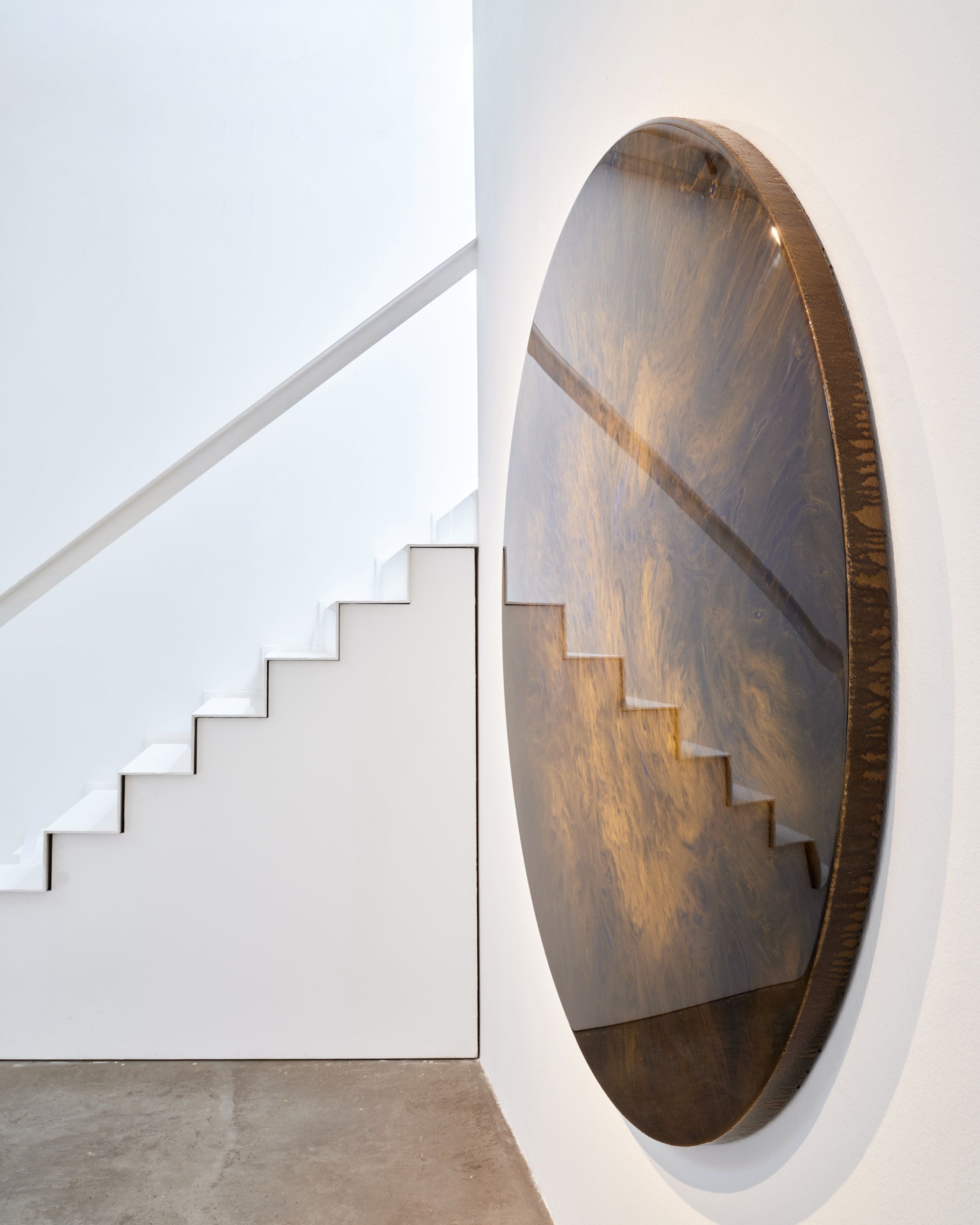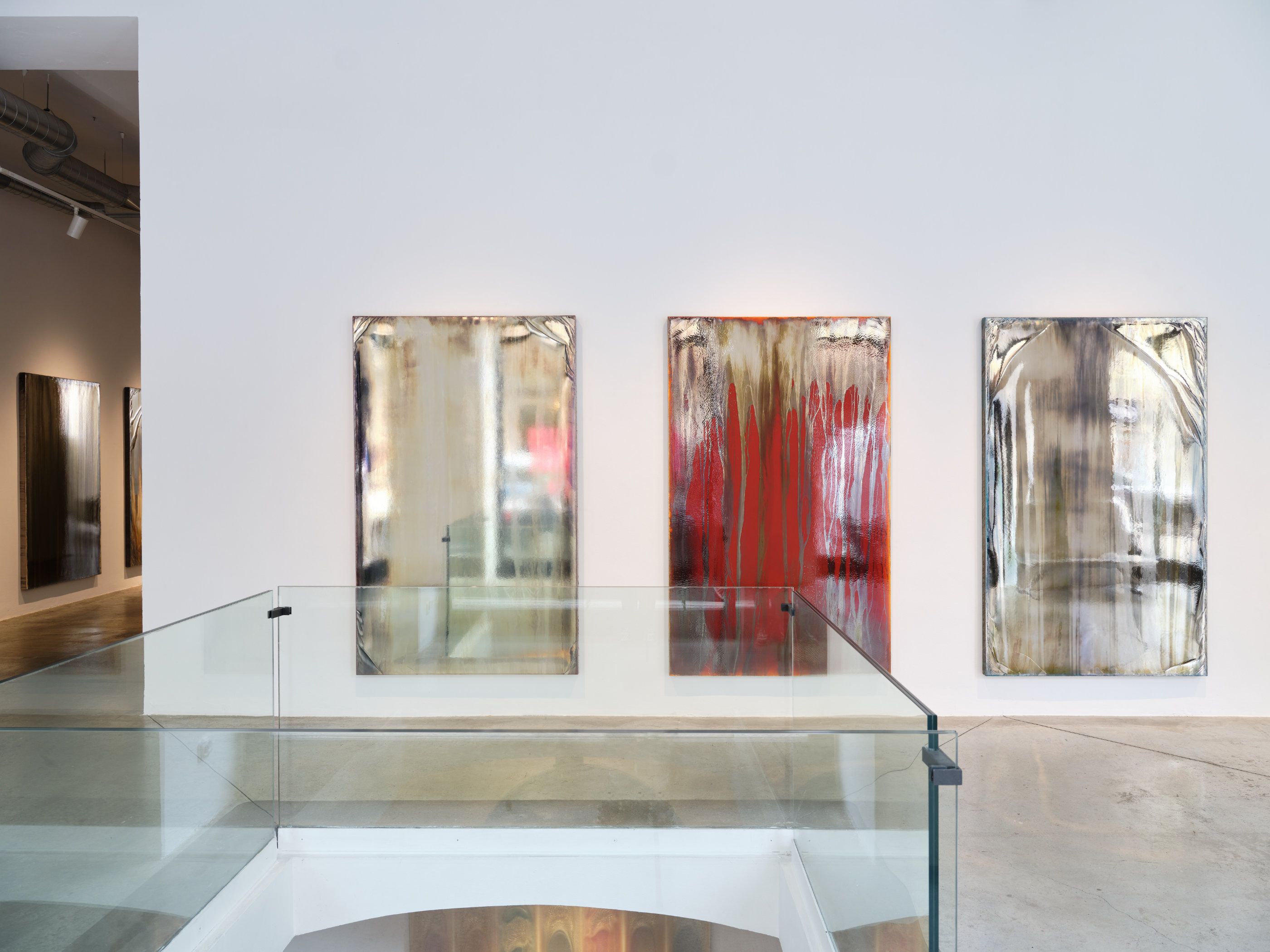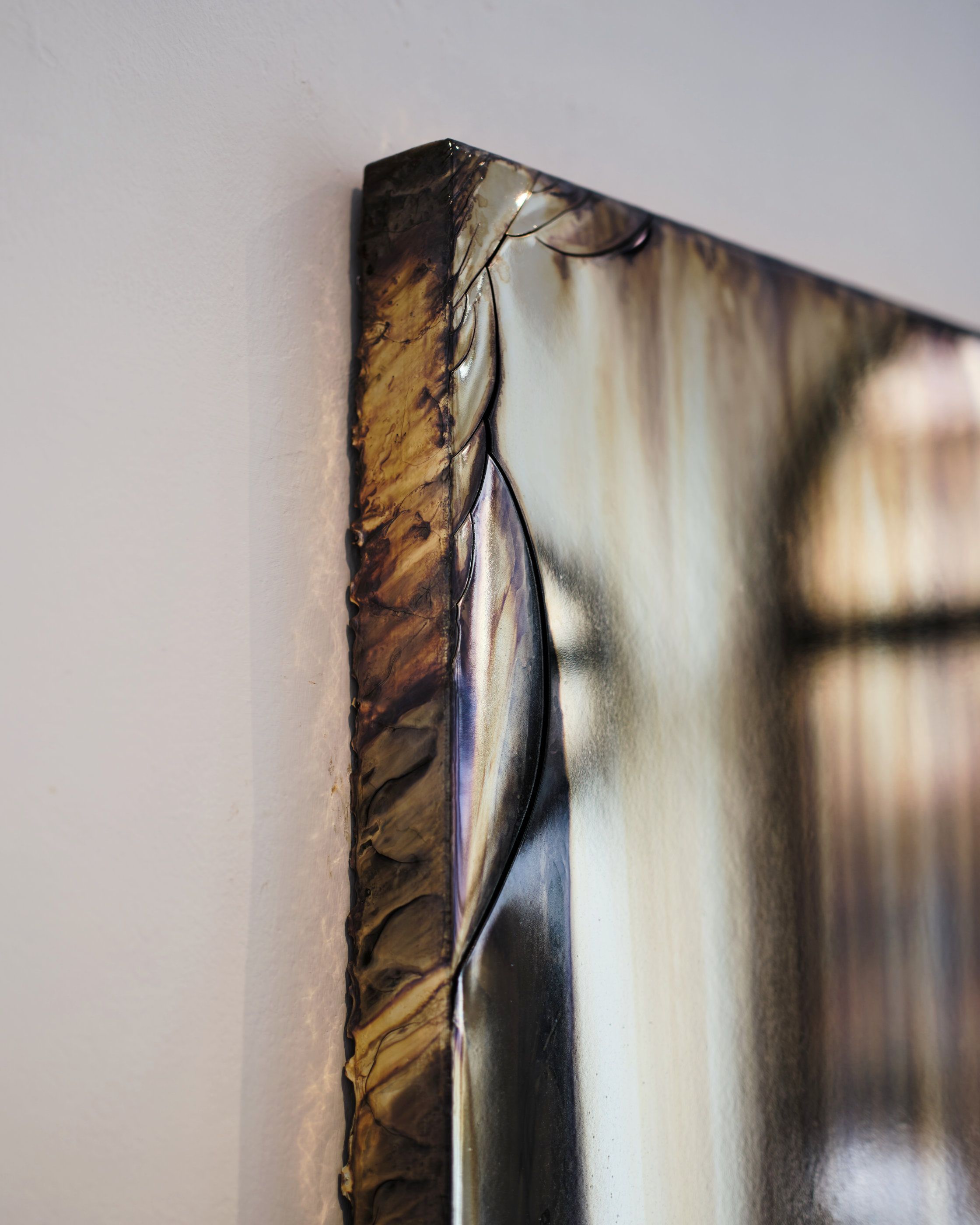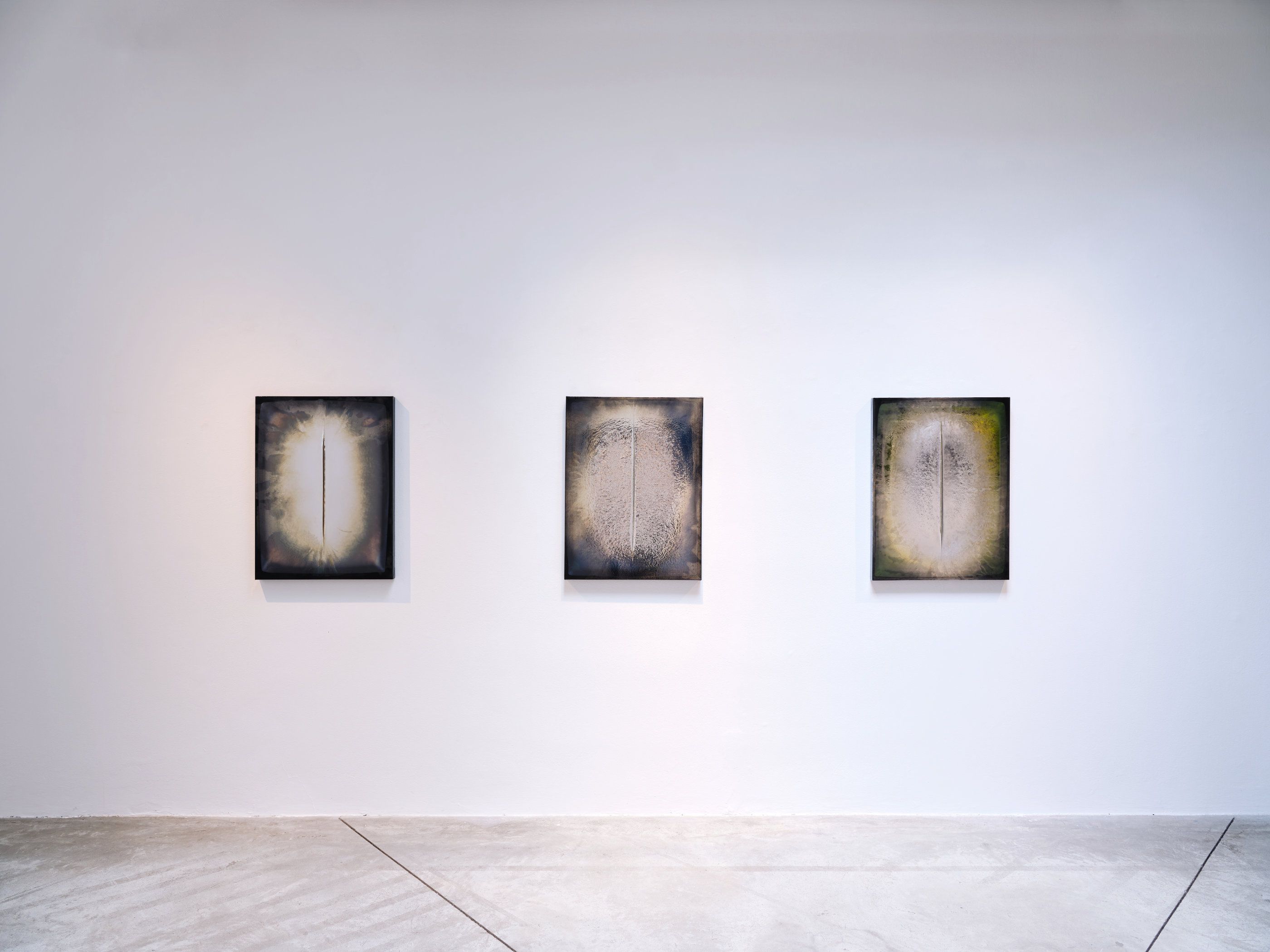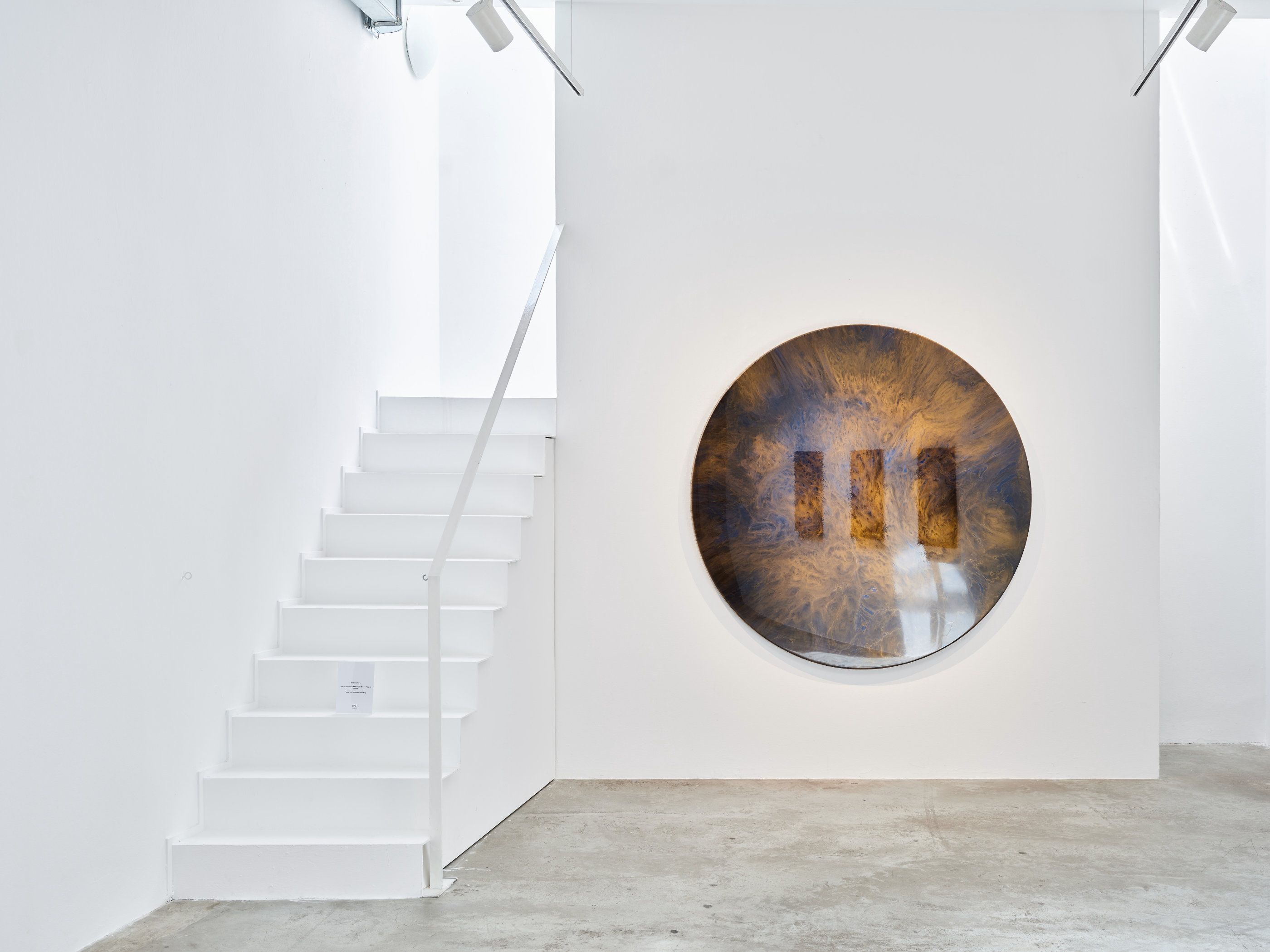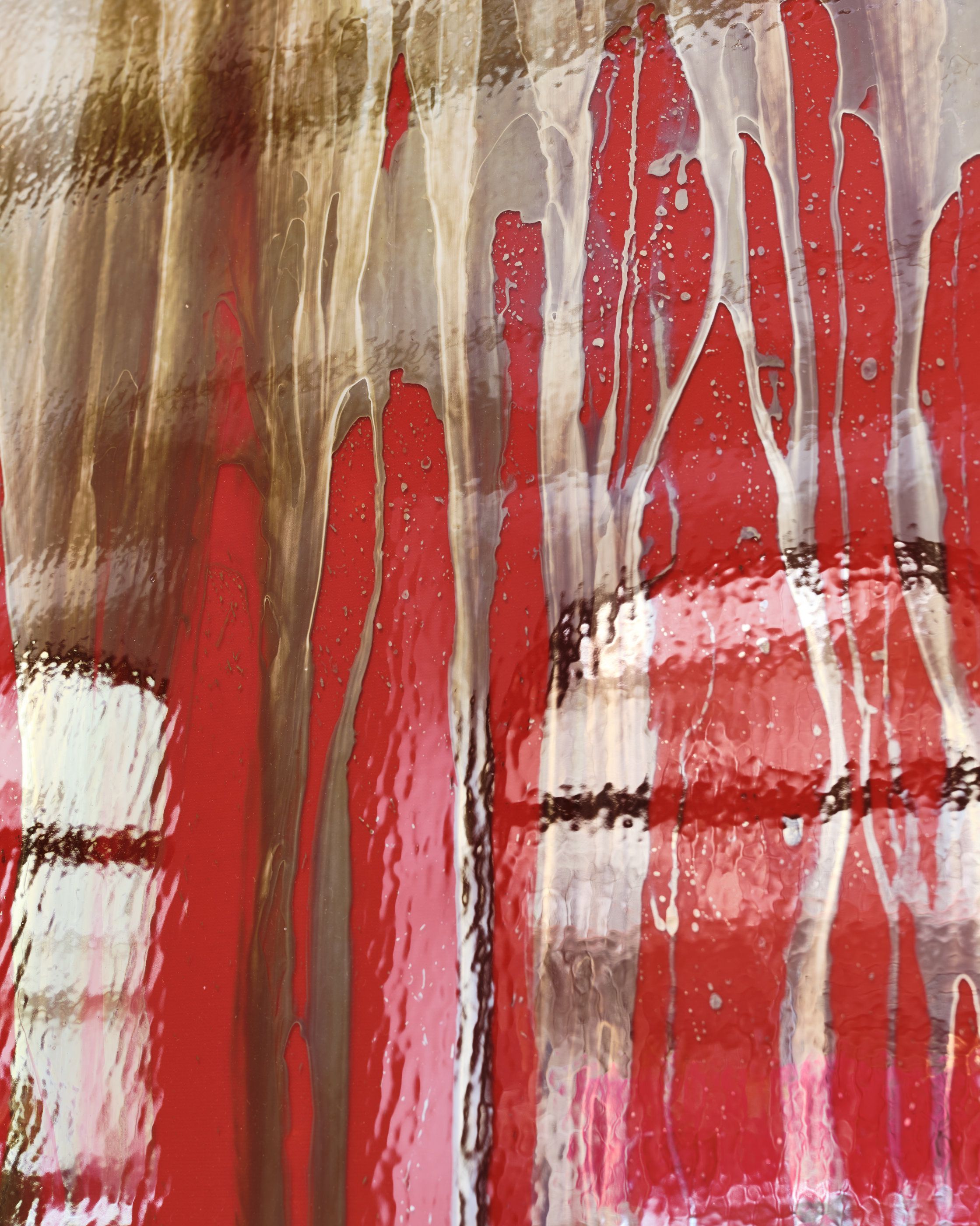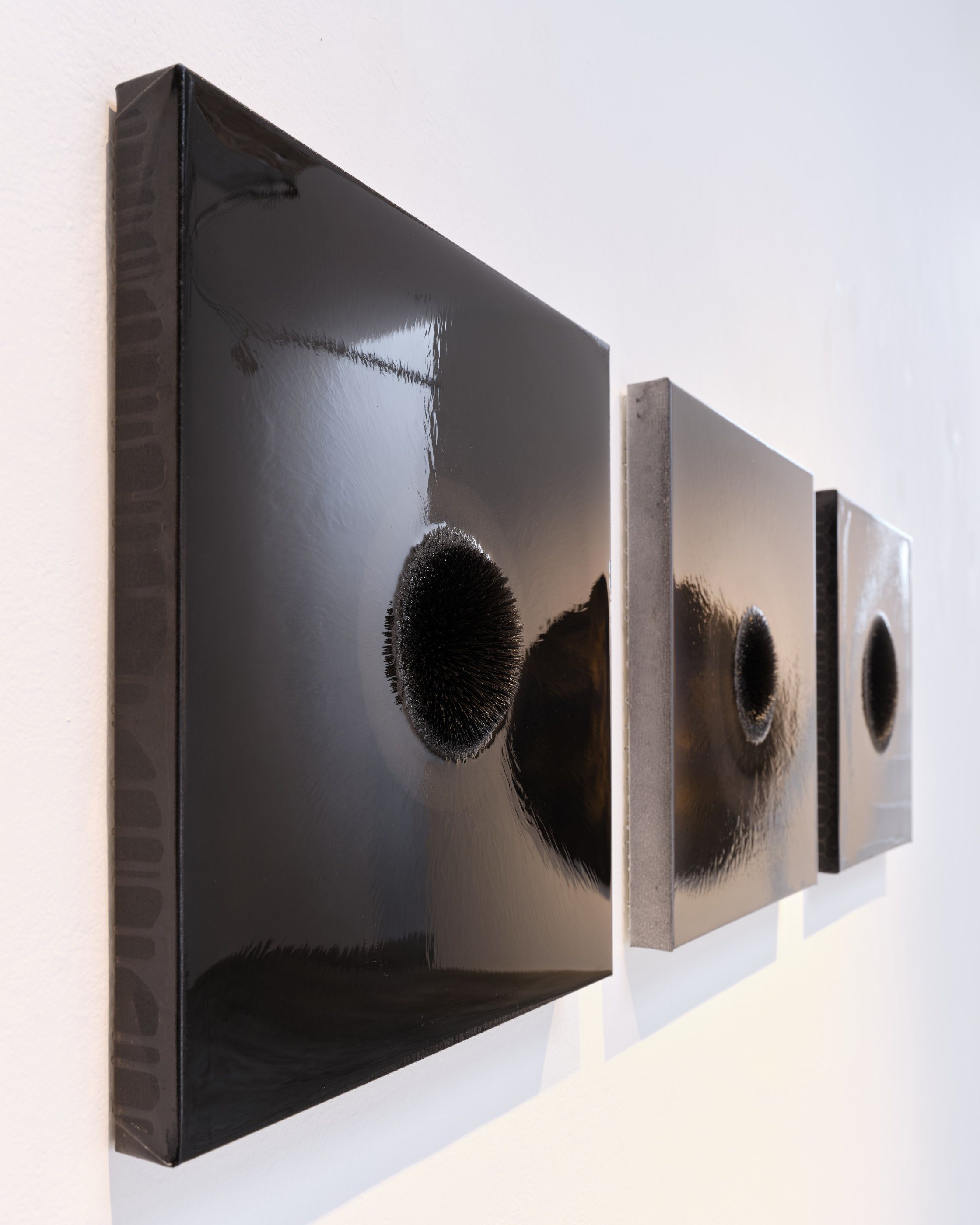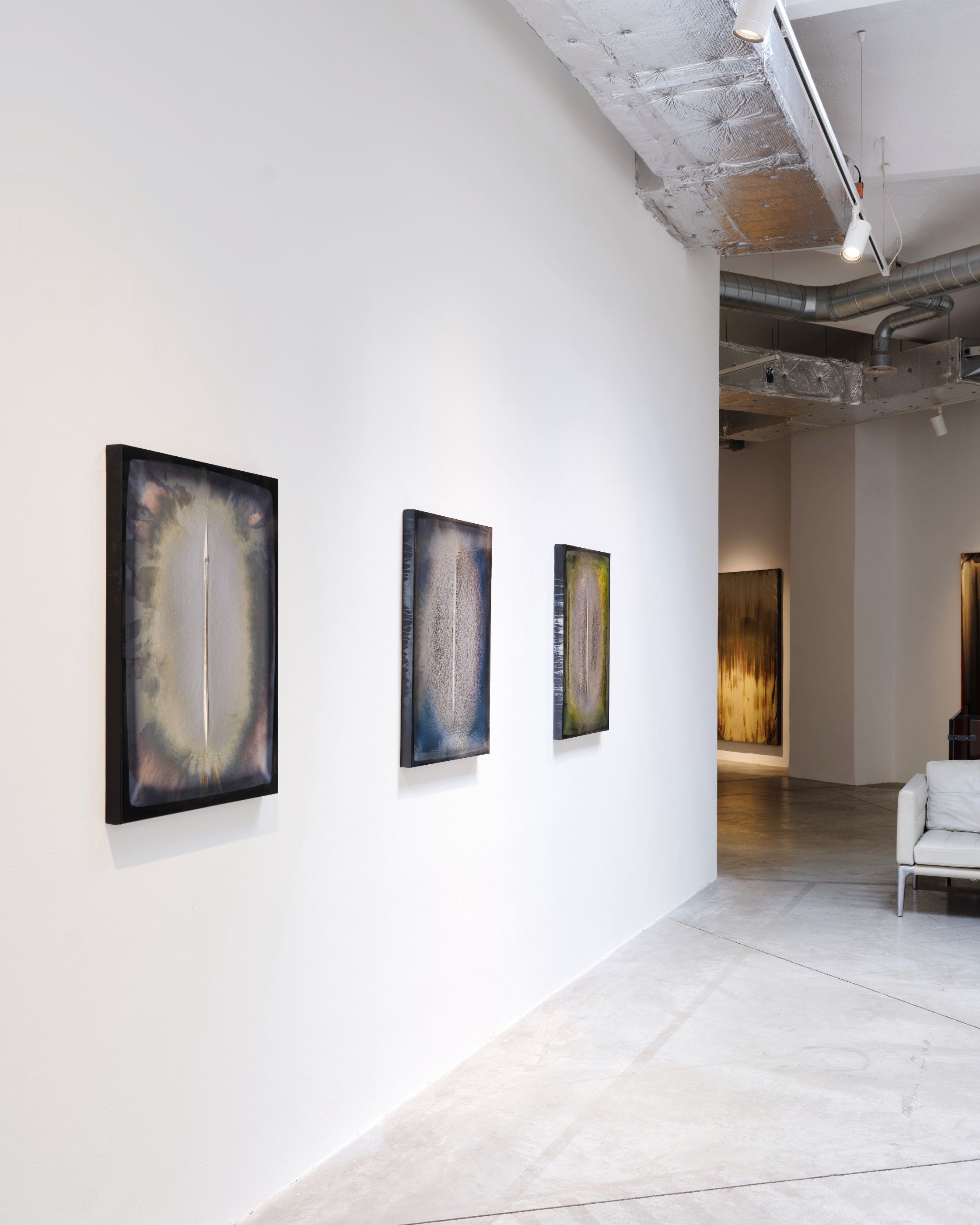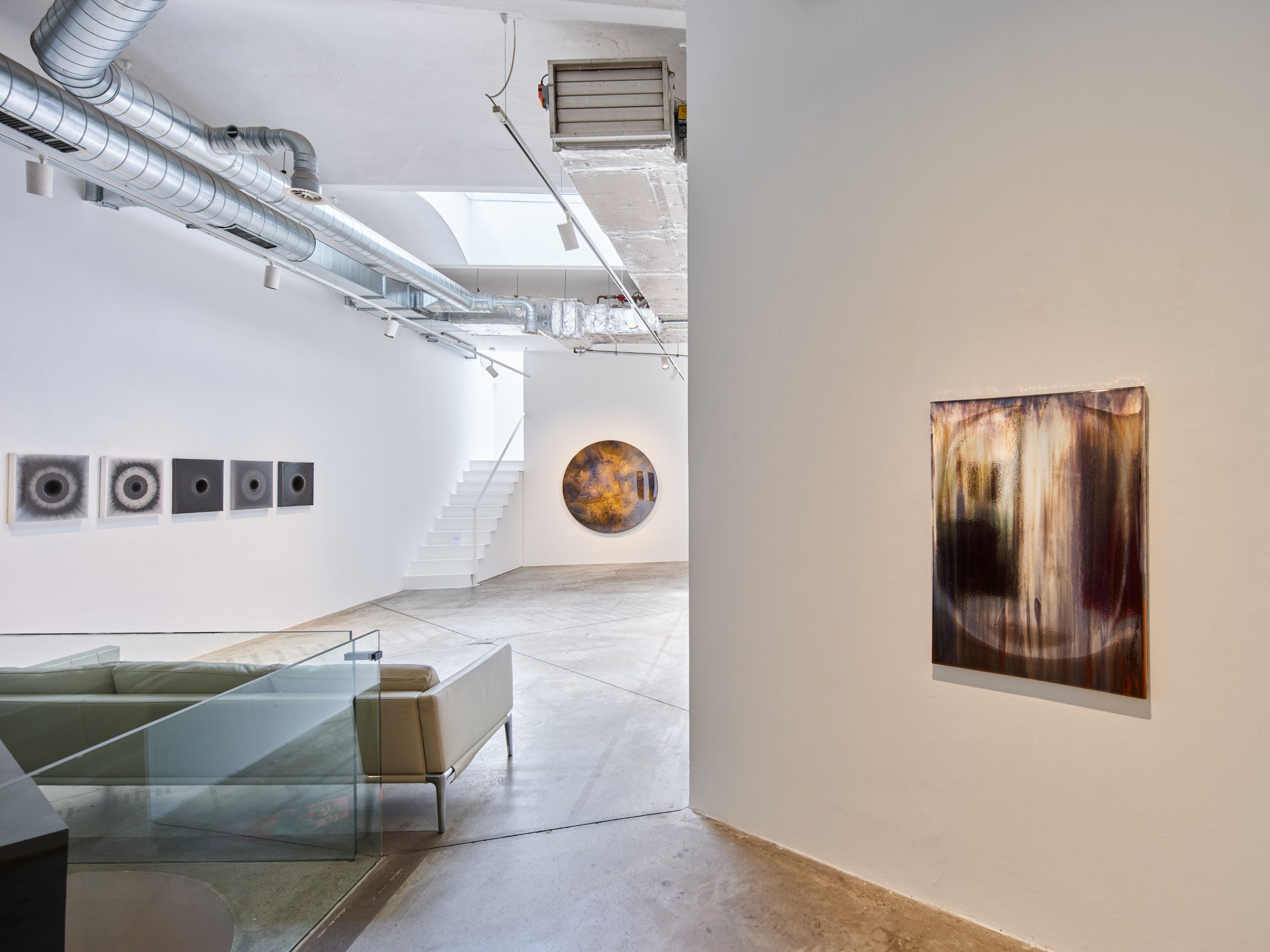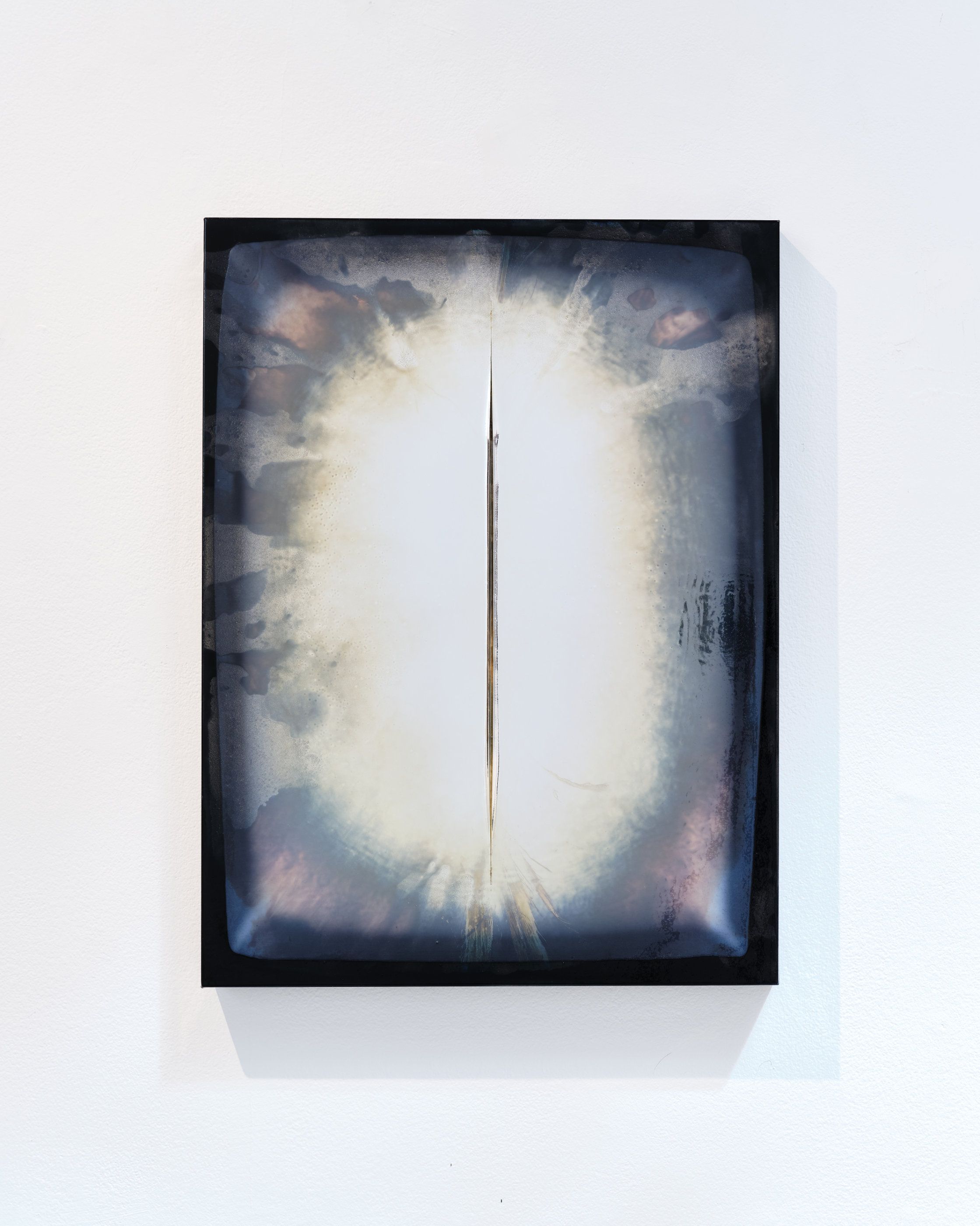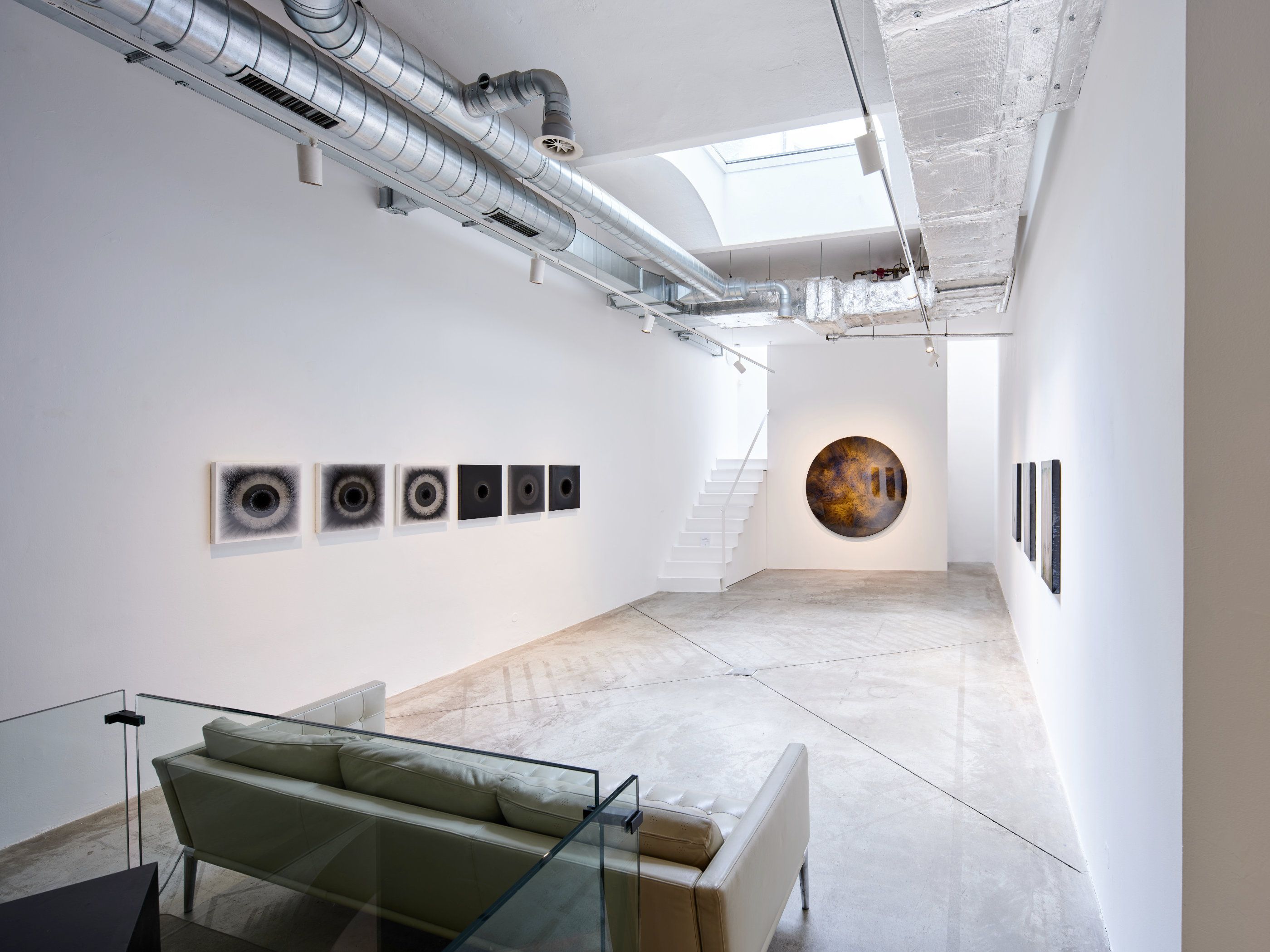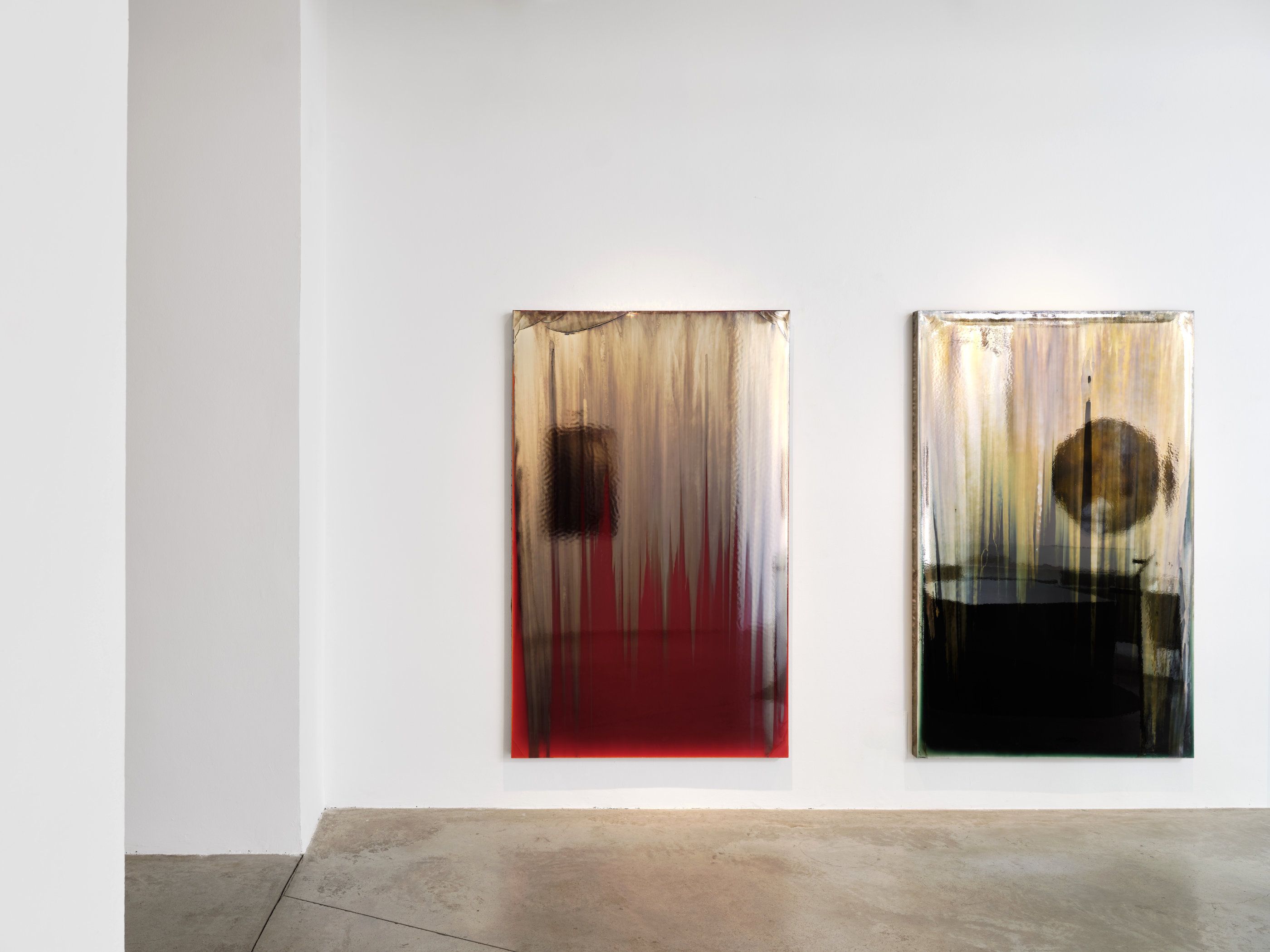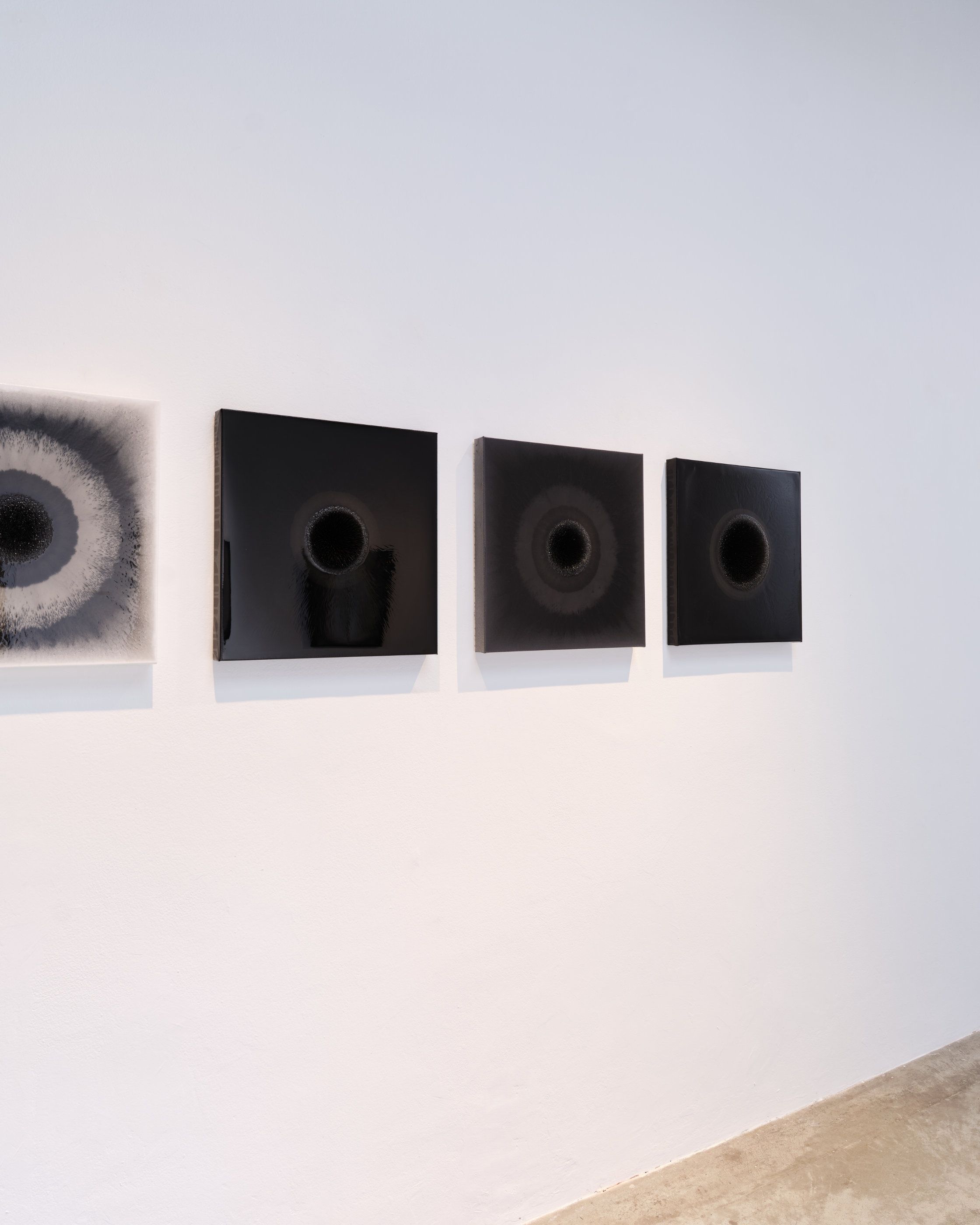Milan Houser



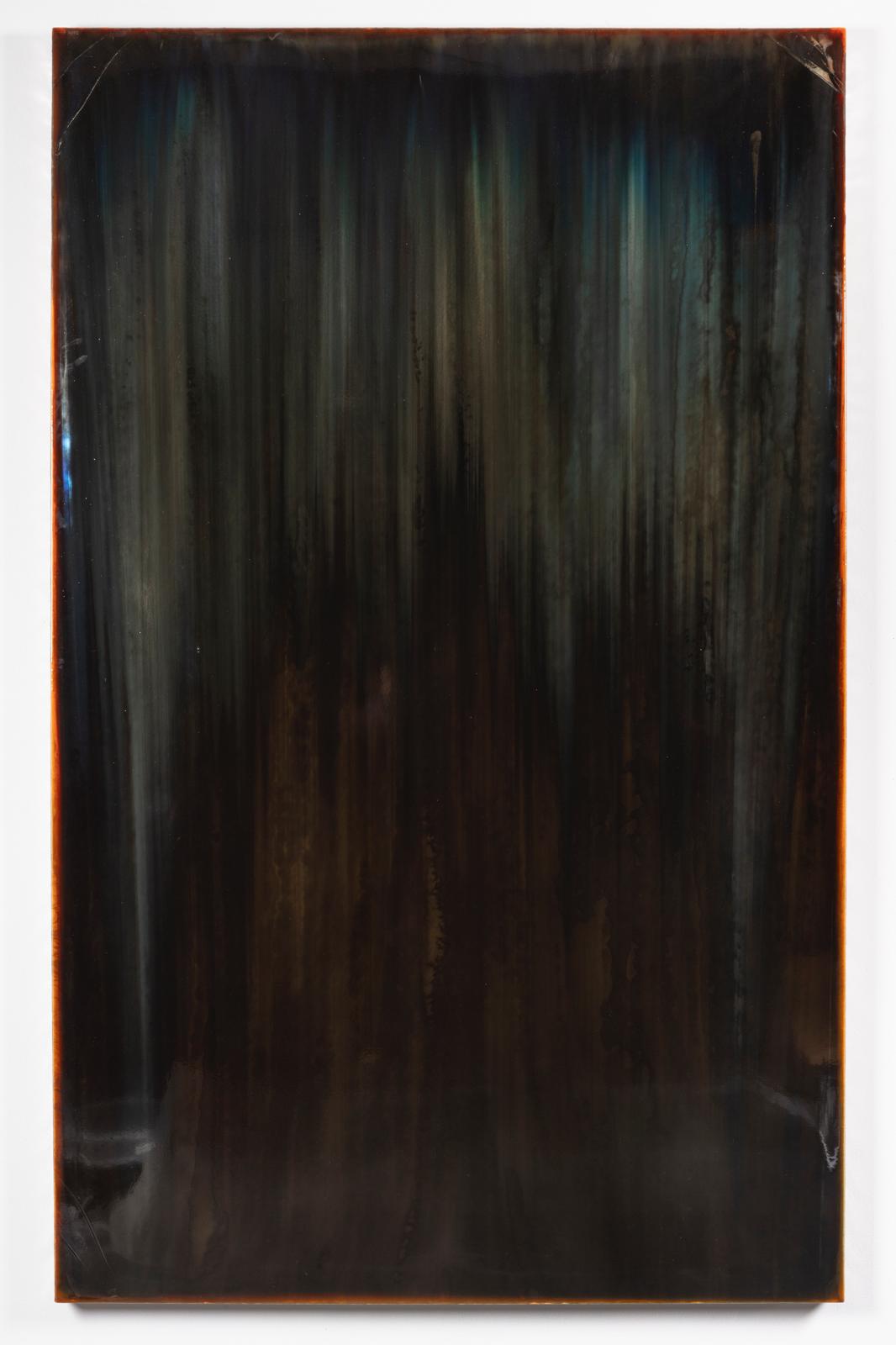

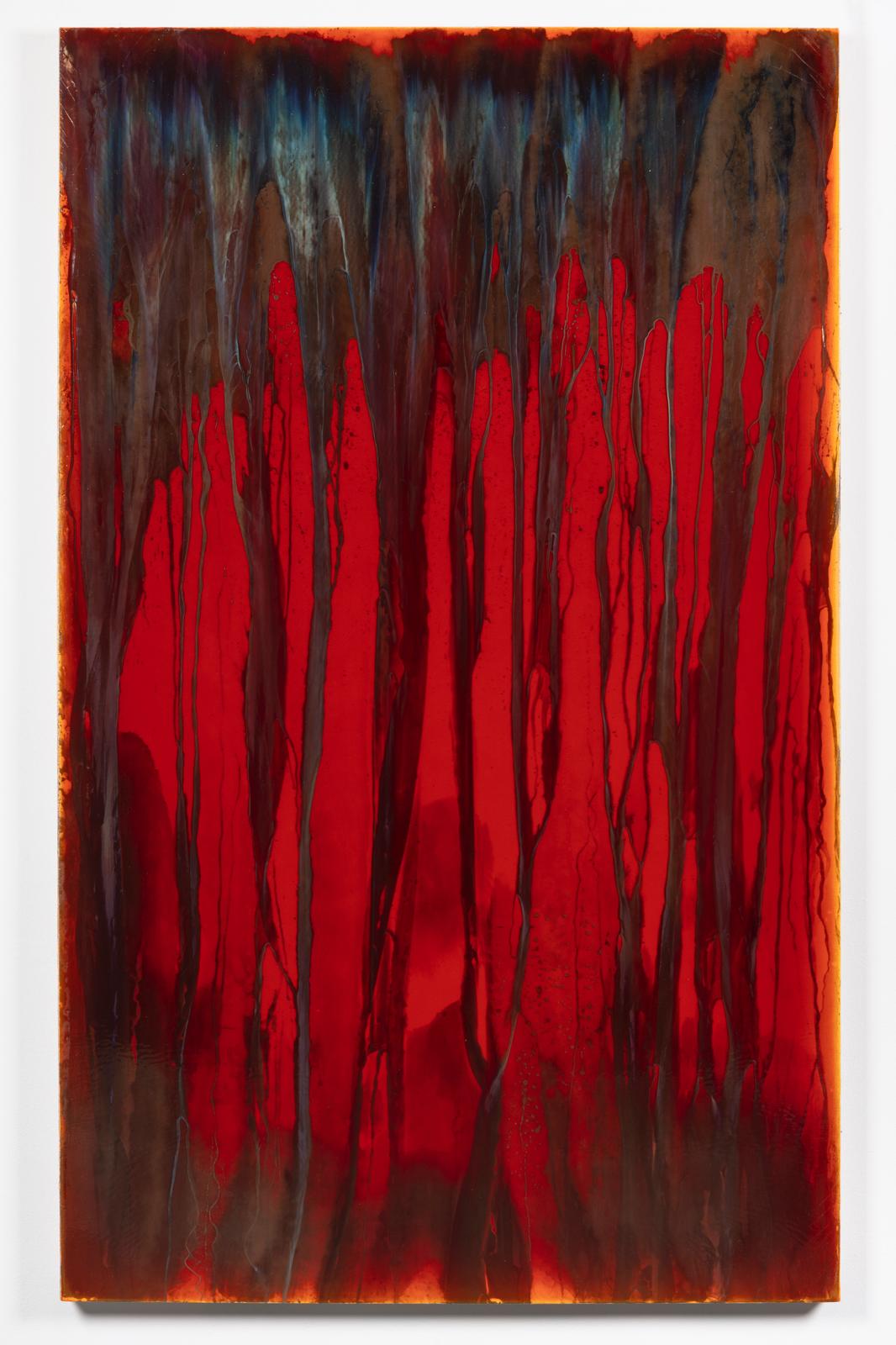
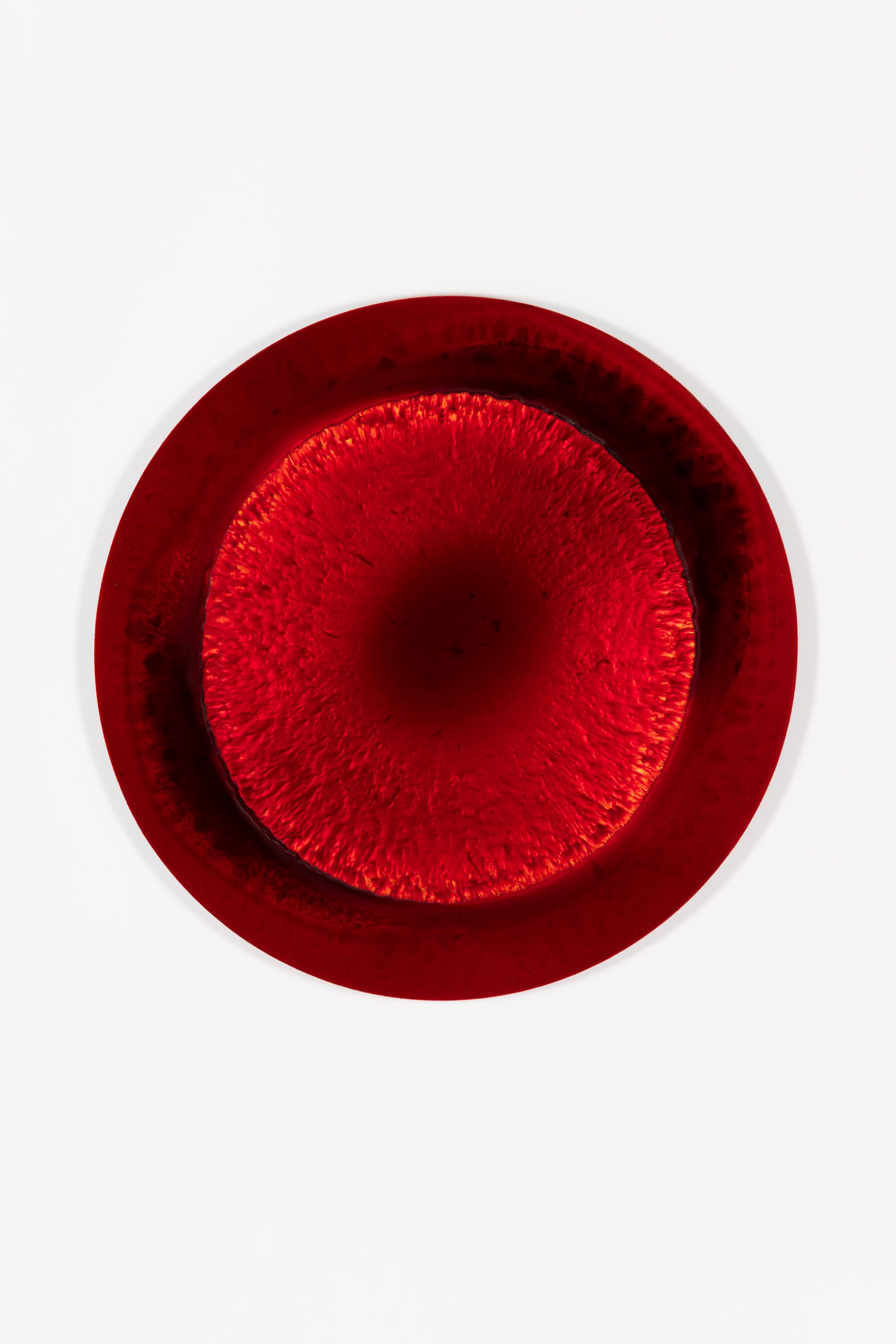


Milan Houser is an experimental painter and alumnus of the Academy of Fine Arts in Prague, Studio of Monumental Art, where he completed his studies under the teachings of Czech sculptor, Aleš Veselý. The preponderance of these works revolves around his experimental use of varnish, pigments and gravity as a medium. Varnish - a solid, glossy surface created by an amalgamation of resin, solvents, and oils - has become such a crucial medium of Houser’s unmistakable artwork that the Czech artist has formulated his own varnish using a unique compound with properties resembling sculptural material and paint. Utilizing a layered technique, Houser pours varnish onto canvas, ensuring the preceding layer reaches a certain solidity before applying the next layer on the surface. He invites the molten varnish to expand across the canvas, languidly trickling down the peripheral of the circular canvas. The interplay between the internal chemical reactions and the external draw of gravity introduce a welcomed variable of unpredictability and spontaneity within the conception of a single composition. By scrutinizing a sliver of his paintings, viewers can dissect the intricacies of Houser’s methodology, becoming mesmerized by the undulations, cavities, and vesicles burgeoning from its core.
The work of the Czech painter Milan Houser (1971) is characterised by experimental painting methods, where he prefers non-figurative, non-illusive painting in border positions of the iconobject with a distinct colour autonomy. He reduces his artistic research to the basic material components of painting. His relationship to painting is specifically "non-painterly": he has long used industrial materials, which he has had custom-made and tested new technological processes, pouring layers of resins or varnishes almost endlessly, benefiting from their mutual dialogue and the reactions of pigments, varnishes, metals, magnets and other components of painting. The central platform of his work is not only a fascination with selected chemical and physical processes and materials, but also an overall conceptual perception of the origin and formation of the materials used. He often works in complete series of works that have also been previewed at DSC Gallery in the past, such as In Pearl, Lithographs, Roofs, Kaluze, Vanitas. In the current exhibition at the DSC Gallery in Prague, he presents a brand new collection of works under the title Melancholy. It is again a clash of visual "civilizations" - layered nitrocellulose lacquers and chemical coating. When the bodies of the paintings are annealed with flame and then cooled, the paintings crack and a silver mirror film appears on their surface, much like the magic of traditional photographic processes. The heat of the fire, chemical reactions, cooling, cracks and other factors that come into play in the creation - transformation of this actually ever-changing living rganism image create the actual state in which we see ourselves. These are primarily a series of monochrome canvases ranging from bloody cadmium tones to brooding silvery black shades - 210 x 140 cm, 2024, which create a melancholic, post-humanist feeling, or an intense dystopian atmosphere in which the reflective, shrunken bodies of the paintings are revealed. The artist "tortures" the paintings with fire and time, the cracked surfaces of the paintings gradually solidify and melt into the entropy of matter. The soft cast tissues, whose passage through time, embody an urgent statement of the painter's essence, reflecting the impression of our darkened, oppressive present. The formats of the mirror paintings correspond to the size of the human figure, thus naturally mirroring the perceiver and the space itself in a golden section. Houser thus continues to develop his distinctive story of "non-contact" painting - without the input of handwriting or brush. As the painter himself aptly says: "The painting creates itself - by controlled chance, by chemical reaction, with my physical assistance, it has a will of its own...". Milan Houser thus continues to bring innovative painting approaches to the traditional medium of visual culture.

